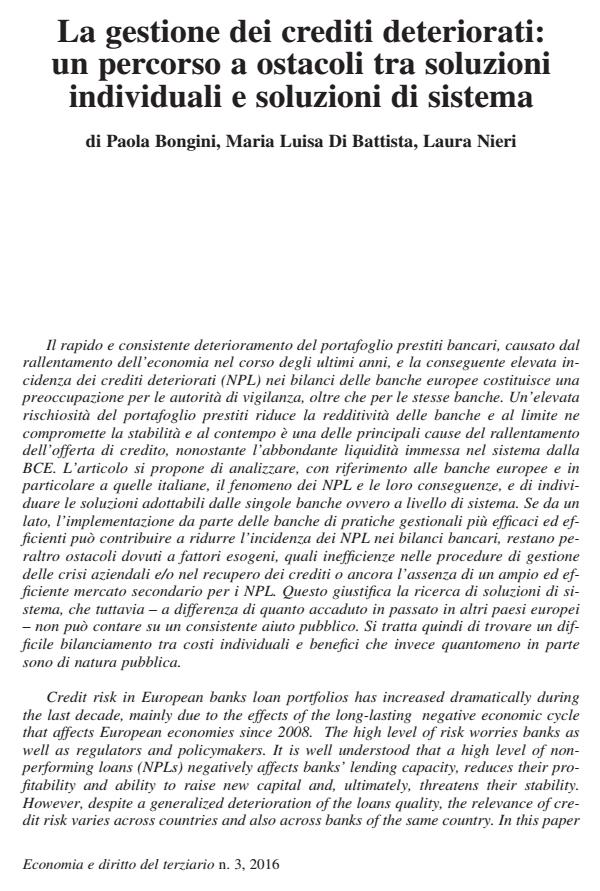La gestione dei crediti deteriorati: un percorso a ostacoli tra soluzioni individuali e soluzioni di sistema
Journal title ECONOMIA E DIRITTO DEL TERZIARIO
Author/s Paola Bongini, Maria Luisa Di Battista, Laura Nieri
Publishing Year 2017 Issue 2016/3
Language Italian Pages 27 P. 439-465 File size 560 KB
DOI 10.3280/ED2016-003006
DOI is like a bar code for intellectual property: to have more infomation
click here
Below, you can see the article first page
If you want to buy this article in PDF format, you can do it, following the instructions to buy download credits

FrancoAngeli is member of Publishers International Linking Association, Inc (PILA), a not-for-profit association which run the CrossRef service enabling links to and from online scholarly content.
Credit risk in European banks loan portfolios has increased dramatically during the last decade, mainly due to the effects of the long-lasting negative economic cycle that affects European economies since 2008. The high level of risk worries banks as well as regulators and policymakers. It is well understood that a high level of nonperforming loans (NPLs) negatively affects banks’ lending capacity, reduces their profitability and ability to raise new capital and, ultimately, threatens their stability. However, despite a generalized deterioration of the loans quality, the relevance of credit risk varies across countries and also across banks of the same country. In this paper we analyse which strategies can be deployed by banks and governments to manage and reduce the high burden of non-performing loans.
Keywords: Credit risk, non-performing loans, bad bank, securitization.
Jel codes: G21, G28, G33.
Paola Bongini, Maria Luisa Di Battista, Laura Nieri, La gestione dei crediti deteriorati: un percorso a ostacoli tra soluzioni individuali e soluzioni di sistema in "ECONOMIA E DIRITTO DEL TERZIARIO " 3/2016, pp 439-465, DOI: 10.3280/ED2016-003006